The 1st Independent Polish Parachute Brigade
(1 Samodzielna Brygada Spadochronowa)
Formation Of Anders Army
The Beginning Of Freedom For Captive Poles
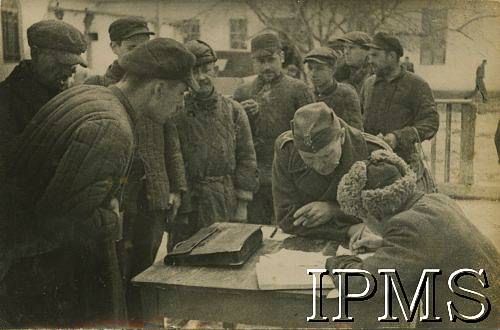
Forming of Anders Army At Lugovoye 1941
The British Angle
After both Germany and Russia had invaded Poland, Britains response was quite notable.
On 3rd September 1939 Britain along with France declared war on Germany demanding that the Wehrmacht withdraw from Poland. But Britain did not request that Russia withdraw from Poland.
This was amplified when the Polish Ambassador, Count Raczynski visited the Foreign Office in London and was told that "Britain has guaranteed Polands Independence not her frontiers". In effect, Britain was saying they would protect Poland from Germany but not Russia.
Why did Britain fail to see the atrocity being committed by Russia?
In short, this was probably due to the fact that in World War 1 Russia had been an ally of Britain. Remember that at that time, Britain was not aware of the Great Terror and similar horrors of the 1930s along with the fact the Britain was neither aware of Molotov-Ribbentrop agreement.
So Russia remained very much a political ally, perhaps friend, of Britain and Stalin used this and benefited by it.
General Anders Commands Polish Army In Exile
Once the Sikorsky-Maisky agreement was signed, General Anders was selected to head up the Polish army in the USSR. This came to be known as "Anders Army".
He was highly regarded as a very determined military man, full of courage and had been extremely lucky to escape the fate his fellow countrymen suffered at Katyn forrest.
His depth of knowledge of Russia along with his having served as a cavalry officer 25 years earlier with the Red Army set him in a good place to handle his new role.
On the 4th of August 1941, before the amnesty had commenced, he was appointed.
Interestingly, at this time he was languishing in a prison cell in Lubyanka expecting to be executed by the Russians. However, with Operation Barbarossa occurring, not only was his life saved but his value as an asset to Russia became immense.
The Early Formation Of Anders Army
The initial formation of The Polish Army In Russia (Later to be known as Anders army) started even before General Anders took charge.
In August 1941, General Michal Karaszewicz-Tokarzewski, newly freed by the NKVD, made his way to Totskoye and visited a POW camp where Polish soldiers were being held.
After gaining their release they were organised into a basic army core and Totskoye became the army HQ of The Polish Army in Russia (Later to be called "Anders Army").
Anders Army At Totskoye
Initially, the composition of the Polish armed forces was temporarily assigned to two infantry divisions and one reserve regiment. However, Anders considered this far too small considering there were an estimated 300,000 Polish soldiers in the Soviet Union at the time.
There were whispers of more divisions to be formed, but no one knew where or when. What we do know is that Commander Tokarzhevsky commanded the 6th Division in Totskoye.
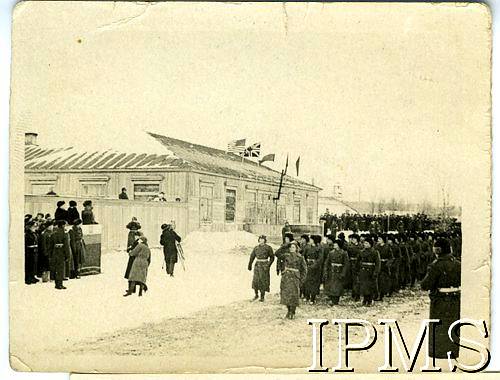 © Karta
© Karta
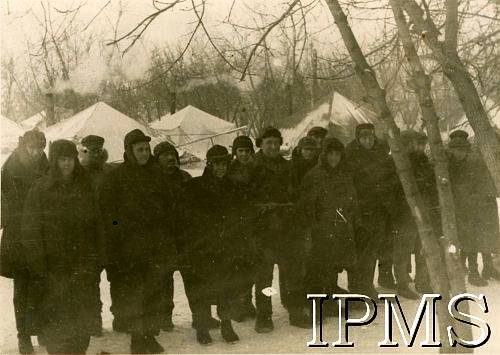
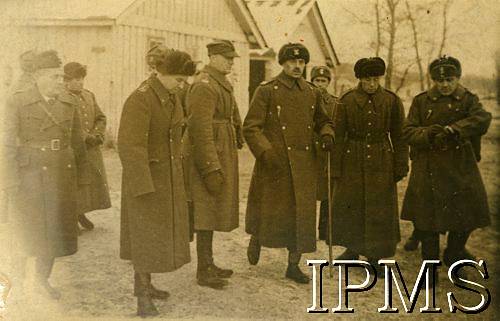
Photos taken at Tockoje 1941 during the forming of Anders army.
On 22nd August 1941 after a meeting, he reported on the agreement concluded between Poland and the Soviet Union and the creation of a sovereign Polish army (Anders Army) on the territory of the USSR. The order ended with a call for all persons of Polish citizenship to fulfill their duty and join the organized army.
More Recruiting Points Created For Anders Army
On that day, 22nd August 1941, at a meeting with the Red Army at their HQ, it was decided that the following Polish formations would be created within Anders Army:
- Army headquarters in Buzuluk.
- 5th Infantry Division in Tatishchev near Saratov.
- 6th Infantry Division in Totskoye, 30 kilometers from Buzuluk.
- Reserve regiment in the village. Koltubanovsky.
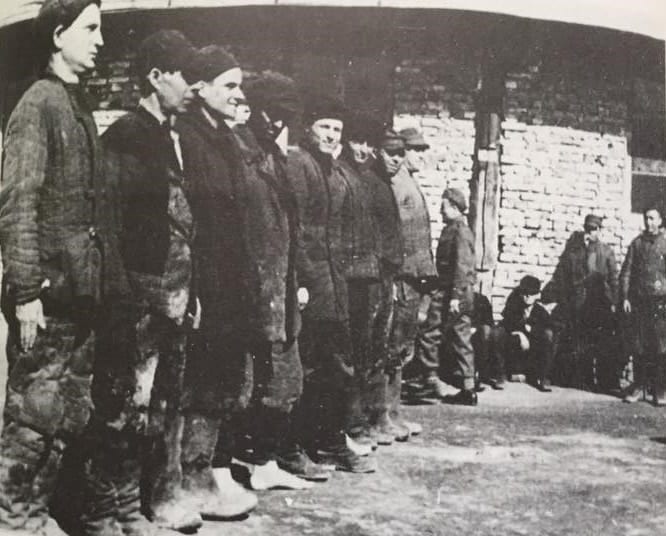
Photo: Forming Anders army. Unknown location.
The Red Army then put at General Anders disposal 3 further military bases thus the recruiting stations for Anders Army came to be:
- Totskoye (H.Q) in the Orenburg Oblast
- Buzuluk in the Orenburg Oblast
- Tatishchevo
- Chkalov
And so in September 1941, the first members of Anders army started arriving at these recruiting stations.
It was in these early days of forming the Polish Army in Russia (Anders Army) that the whereabouts of around 20,000 officers first got raised as a concern. The officers that did make it to the recruiting stations had been able to successfully conceal their identity.
However it was already known that a large number had gone missing because these missing officers had for a while been able to write letters home. Then all of a sudden, all the letters stopped, prompting suspicions in both Britain and amongst the Polish Army in Russia.
Later on, the whereabouts of these officers would come to be known as "The Katyn Forest Massacre".
Recruiting for Anders army began in earnest with initial recruits being POW's with military service. At the outset, only 30,000 recruits were sought. These were recruited directly by special commissions who toured POW camps within Russia. By the middle of September 1941, 24,828 men had signed up.
However, an estimated 225,000 POW's were thought to have existed. At this point it became apparent that the winters of 1939-40 and 1940-41 had been very harsh and killed off the majority of the initial POW's.
The men that did report for duty were lice ridden, gaunt, exhausted and malnourished, dressed in rags. At the same time, hundreds of thousands of polish deportees remained unaware of the "Amnesty" let alone where they were.
Anders Army At Lugovoye

Photo: Signing Up For Anders Army in Lugovoye
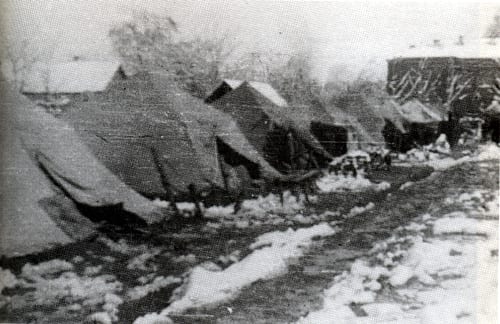
Photo: Harsh Winter Conditions At Lugovoye During Signup
Anders Army At Buzuluk
Anders memoirs indicate that on 8th September 1941 the first employees of the headquarters of the divisions and partly of the army headquarters headed by Generals Boruta and Tokarzhevsky departed from the airfield in Moscow to their permanent HQ, Buzuluk.
The memoirs state that the command of the Polish Army (Anders Army) was stationed near Buzuluk, a few kilometers from Kuibyshev.
At that time Buzuluk was a small, clean, quaint town like most other small towns. It comprised of small brick houses of up to 2 storeys high. The side streets had lovely gardens and the main street was paved, even electric lighting was present in the town. It was a beautiful, calm, quiet and quaint city.
So you can imagine the impact it made on the small town when the Anders Army recruits started arriving en masse!
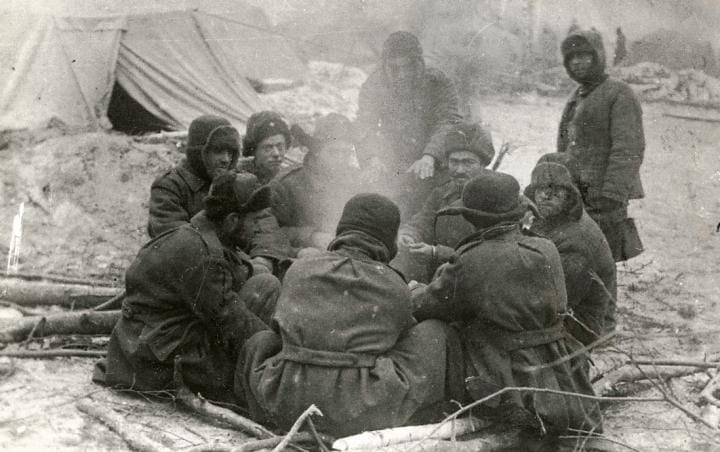
Forming of Anders Army at Buzuluk 1941
In Buzuluk, the Polish command (including Anders who was stationed there) received the use of a stunning house, a 30+ room hotel for officers accommodation and a 5 room mansion for the commander of the army. Many other departments of the army located there also.
Although the picture above would have you believe that all Polish military belonging to Anders Army lived in tents, this is not true.
Although command had the use of a hotel and other large buildings, some Polish soldiers had the use of houses as records indicate they hung Polish flags outside. Of course, the vast majority of Polish soldiers within Anders Army would have lived in tents.
It was whilst in Buzuluk that a dispute between Anders and Stalin broke out over a shortfall of 44,000 rations.
Because there was no point of agreement between the two, consensus is that Anders mind changed at this point, roughly mid September 1941, from keeping the Poles as a fighting army within the Soviet Union to withdrawing them from the Soviet Union.
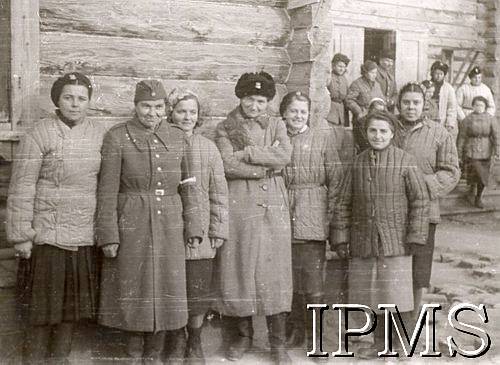
Anders Recruitment Camp At Buzuluk During A Warmer Spell
It was whilst in Buzuluk that Anders also managed to organise 100,000 English uniforms for the soldiers of Anders army, these arriving into Archangel. Other accounts will tell you that the Polish army took up English uniforms in The Middle East, but the fact remains that certainly 100,000 of them arrived into the Soviet Union.
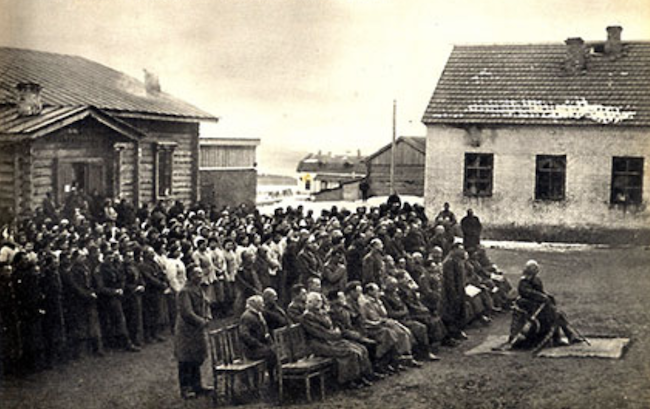
Even whilst going through harsh conditions, the Poles were devout in their religious beliefs. The above picture was taken on Nov 11th 1941 at Buzuluk and shows a Catholic Mass in progress.
Anders Army At Koltubanka
At Koltubanka a recruitment point was also setup for enlistment into Anders Army.
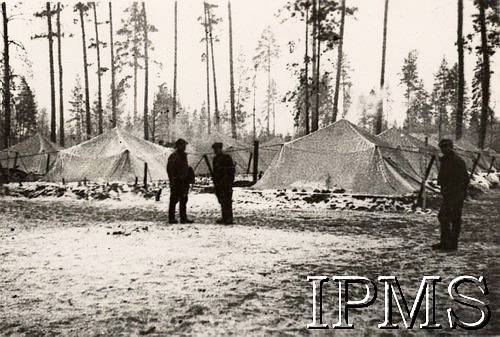 © ©Karta
© ©Karta
Anders Army At Tatishchevo
The 5th Division was recruited here at Tatishchevo by Commander Boruta-Spekhovich. At this point we have no further info on this recruitment post, but as soon as we do it will be added.
Spirit Of The Poles Joining Anders Army
What was remarkable at the time was the change that came over the Polish citizens. Previously fearful, malnourished, overworked, sick, ill and in some cases near death, they suddenly became free people with a future that had promise to it.
No longer were the soviets their captures, their masters, the workers of oppression against them.
Stunned and jubilant at this new found freedom, they hurried to the recruiting stations of Anders army. Many used all manner of resources in getting a place on the trains that the Soviets put on to take them there.
People rushed to places that were known to have units of Anders Army being formed there - in Buzuluk, Totskoye, Tatishchevo.
All types of people traveled, the young, the old, the sick, the women. Their clothing was often rags, some travelled in Polish uniforms, some in civilian clothes, some in sandals, others in boots and yet some even came barefoot. There were some with chests, others with suitcases and even more with a simple knotted piece of cloth with the bare minimum of belongings in it.
Desertion Within Anders Army
One aspect of Anders army deserves a moment of consideration. Although Anders army was a volunteer army, anyone expressing a desire to serve in this army gave up the right to leave it, even if this were for a short time.
Many of the soldiers of Anders army had families in nearby collective farms and labour camps (How did they know this? This is one detail I have been unable to verify).
They were not allowed to leave the army camp to go and see them, even on a soldiers day off he was to remain in camp. To leave the camp, even to see family for a day would be to risk being branded a deserter and being shot! Yes, even in Anders army. And hundreds were shot for just this "crime".
This is perhaps the saddest and most bitter fact to take in. Although we can be quick to brand Anders a modern day Moses leading the Poles out of the land of their captors, to shoot a soldier who has endured arrest, starvation, maltreatment and bitter Siberian cold weather along with a 1500 mile trek to an Anders recruitment post only to shoot him for wanting to see his dear family (or whats left of them) is a travesty.
Anders has blood on his hands, the same blood that is on Stalins hands.
Anders Army Moves To A New Location
According to the book "Trail Of Hope Page 97" by Norman Davies, on 15 January 1941 Anders leaves Totskoye with HQ staff and travels by train for around 5-6 days to Yangi-Yul, a military camp outside Tashkent in Uzbekistan. Uzbekistan is part of Central Asia and yet is a republic that at the time was controlled by Russia.
He arrives and sets up branch camps for the various sections of The Polish Army as follows:
- 5th Infantry Division - Dzhalyal Abad (Kirghizia)
- 6th Infantry Division - Shachrizyabs (South Uzbekistan)
- 7th Infantry Division - Kermine (Central Uzbekistan)
- 8th Infantry Division - Pachta (Kirghizia)
- 9th Infantry Division - Ferghana (Uzbekistan)
- 10th Infantry Division - Lugovoye (South Kazakhstan)
- Artillery Center (Tadzhikistan)
- Army Training & Engineers (Vrevskoye, East Uzbekistan)
- Armoured Forces - Otar, West Kirghizstan)
- Army Depot
- Womens Auxillary Service (Guzar, South Uzbekistan)
This new location would be a better climate and would allow the men to refresh and regain health. New recruitment stations were setup in Uzbekistan also.
** Editors Note: At this stage we dont know if/when recruits form the initial recruiting also took the journey to Uzbekistan and Kazakhstan. One has to assume they did.
Anders Army At Wrewskojce, Uzbekistan
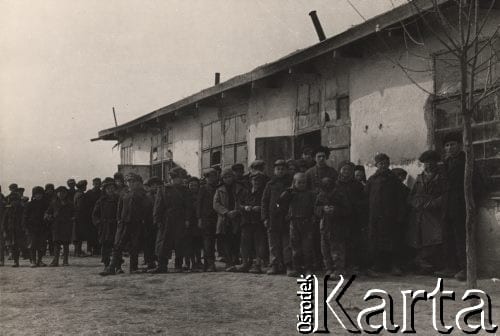
Anders Army Relocates To Persia
The British and the USA were doing all they could to keep Anders and his army supplied, shipping supplies from their base in Iran via train to Anders. But the majority of the food came from Russia itself and Stalin kept delaying and altering rations to the point that lives were at risk.
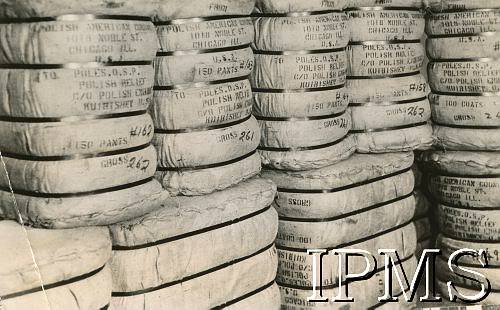
Clothes from the USA destined for Anders Army in the USSR
This was the cause of many arguments between Stalin and General Anders and Anders soon became disillusioned.
The British said he was more than welcome in The Middle East and Anders mind began to turn towards this as the condition of his men worsened due to lack of rations, nourishment and epidemics.
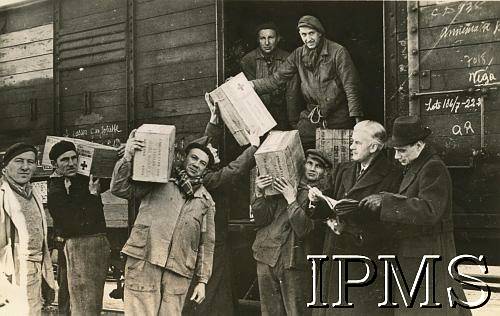
US supplies arriving in the USSR for Anders Army
So on 18 March 1942 Anders and Stalin met over a shortfall of 40,000 rations. A unanimous decision was made to evacuate some of the Anders Army to The Middle East with the remainder being left in Central Asia.
This was the start of the evacuations to The Middle East.
One of the reasons Stalin may have been keen for this is that the rations could now be re-purposed for the Red Army.
Misc Photos Of Enlistment to Anders Army
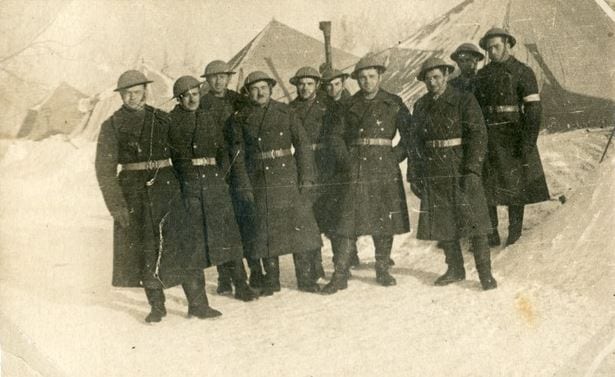
Photo: Forming of The 19th Infantry Regiment
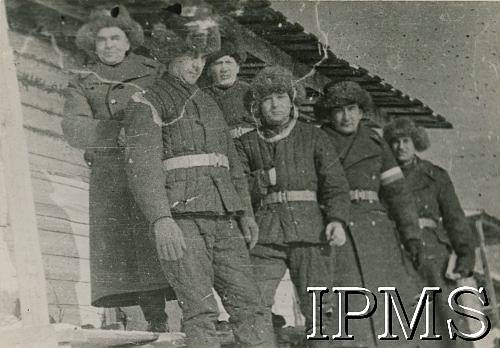
Photo: Unknown unit/place of Anders army recruitment
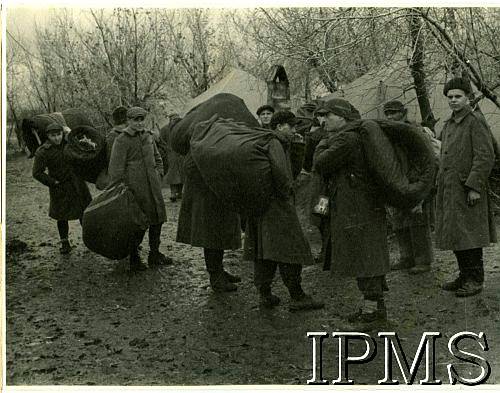
Photo: Unknown unit/place of Anders army recruitment
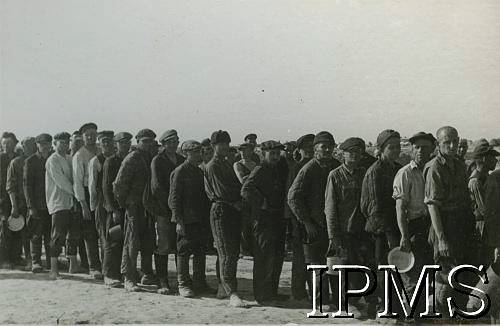
Photo: Anders Army queuing for a meal
Further Reading
The memoirs of Klimkovsky (An assistant to General Anders) provide a massive amount of insight into what really occurred in 1941/42. The memoirs cover many areas not covered by websites and books on Anders. Worth a read, you will find them here: http://militera.lib.ru/memo/other/klimkovsky_e/01.html
Please Donate!

Uncover The Past - Support The Future
Each year, about 12,000 people visit this website to trace their Polish ancestry, uncover family stories, and connect with their roots. I believe that history should be accessible to all - but keeping this website alive comes at a cost, 7 years @ £1000 per year with has left a £7000 dent...with only £122 in total donated up to 14/07/25 😱😱😱
Every detail you uncover and every story you piece together helps you piece family history together. Please donate if you found this site useful, help me keep the site alive! Thanks! Jason Nellyer (Researcher & Site Owner)